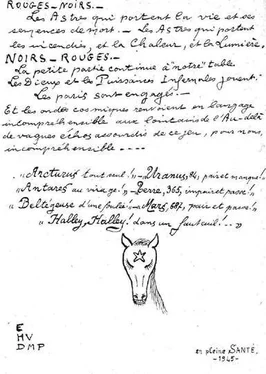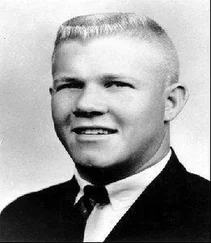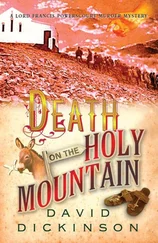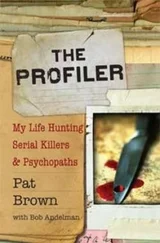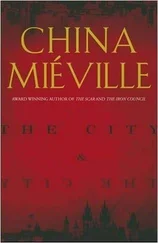This was sordid business. At the same time, it illustrates painful moral ambiguities at the heart of the Second World War. As the historian and grandson of a wartime Argentine consul, Uki Goñi, asked, which was worse: selling visas that allowed hunted Jews to flee Nazi tyranny, or remain “uncorrupted” and refuse to issue any immigration documents at all?
So when Petiot said that his escape organization had access to someone inside an Argentine embassy, it would not have sounded preposterous. But that, of course, is not the same thing as saying that he actually had the documents, or that they would have managed to secure their entry into that country. At the time Petiot claimed to have such power, Argentine diplomatic papers, both real and forged, were losing their value. Immigration was tightening against legal and illegal entries, even before the military coup of June 4, 1943, would restrict it to a trickle.
EDMOND Pintard, the tall, garrulous, extroverted fifty-six-year-old makeup artist and former vaudeville performer, stepped into Massu’s office on March 20, 1944. The commissaire later remembered how poorly the interrogation had begun, and how arrogant the detainee had been.
“Monsieur le commissaire,” Pintard said, with an exaggerated self-confidence. “Do you know who I am?”
“Yes. Edmond Pintard, theatrical makeup artist currently threatened with an indictment of complicity for … crimes.”
“Me, an accomplice of crimes, the Great Francinet? Yes, I mean the Great Francinet, known by all the directors of music halls of Paris, a specialist in songs for weddings and banquets. My name, Monsieur le Commissaire, was on the advertising columns in letters this large, ” demonstrating by stretching out his hands, his fingers stained yellow by tobacco. “And if I am a makeup artist today, it is because I chose to retire at the height of my glory.”
“How much were you paid to be the recruiter of Dr. Petiot?”
“You dare …”
“I dare say that if you continue to tell me about your life, I am going to get angry. We are not at the theater here.” Massu pointed to the files on his desk, detailing the “innocent men and women who have been murdered by the careful attention of your friend Petiot. Murdered and perhaps tortured, before being cut up into bits and thrown into a lime pit. You have never smelled human flesh burning, have you?
“I asked you how much Petiot paid you,” Massu repeated. “I don’t believe that I heard your answer.”
Pintard would eventually say that, despite recruiting for the escape organization for about two and a half years, he had only been paid twice. The first time was 6,000 francs, and the second 12,500 francs. His friend, Fourrier, had paid him directly out of his own commission. Pintard had only met Petiot once or twice, he added, and dealt through Fourrier, whom he had known for almost twenty years. Like the hairdresser, Pintard said that he did not know of the town house at 21 rue Le Sueur until he read about it in the newspapers.
“Did you solicit in bars?”
“Yes, sometimes.”
“And the other times?”
“People began to know me in the neighborhood. They came to me.”
When asked what exactly Petiot had promised his clients, Pintard explained that it was a safe passage to South America and official papers that proclaimed them commercial agents of a republic there. Like Fourrier, Pintard claimed to have believed that Dr. Eugène was a hero, a patriot, and a “great Resistant.” As for his own responsibility, he said he thought he was only “doing [his] duty helping other Frenchmen escape their enemies.”
At the end of the questioning, Pintard paused at the door. Massu asked if he wanted to say anything.
“Monsieur le Commissaire, if you would kindly ask the photographers to give me some peace. Everyone who knows me … I am ashamed.”
“I am unable to do anything. They are doing their job.”
Pintard opened the door, exiting to the blinding light of magnesium flashbulbs.
15.
WAR IN THE SHADOWS
A WORLD WHERE THERE IS NO MORE ROOM FOR HUMAN BEINGS, FOR JOY, FOR ACTIVE LEISURE, IS A WORLD WHICH MUST DIE.
—Albert Camus
AT the time Fourrier and Pintard began recruiting clients to escape Occupied Paris, Nazi Germany looked almost invincible. The swastika flew over capitals across the continent: Berlin, Vienna, Prague, Warsaw, Copenhagen, Oslo, Amsterdam, Brussels, Paris, and after April 1941, Belgrade, Sofia, and Athens. London, many believed, would be next, fulfilling Marshal Philippe Pétain’s prediction that Britain would soon be a corpse.
On June 18, 1940, General Charles de Gaulle had entered the London BBC studios and issued a powerful appeal to his countrymen: “The cause of France is not lost.” All French officers, soldiers, and workers should join him at once in the continued struggle, he said. “Whatever happens, the flame of French Resistance must not and shall not die.”
Few people in France actually heard that landmark broadcast; fewer still had answered the call. In fact, no prominent military officer, politician, or businessman had signed up to de Gaulle’s cause, except for the governor general of Indochina, Georges Catroux, and, almost one year later, the forty-one-year-old left-wing prefect of the département of Eure-et-Loire, Jean Moulin. Most of de Gaulle’s earliest supporters were Bretons, estimated in July 1940 to represent some two-thirds of his small army of seven thousand patriots.
After the conquest of France, the Nazis had tightened their grip over the occupied zone, pouncing on any sign of unrest. When morale hit new lows in the winter of 1940–1941, as temperatures fell below freezing for a record seventy times, which was fifty more than average, the Resistance gained few additional recruits. By the spring of 1941, when Petiot first told Fourrier about his supposed organization, all of Paris and its surrounding region could have produced fifty fighters, as Charles Tillion recalled with some exaggeration, “capable of using any weapons at all.”
Resistance to the German Occupation in Paris had, of course, lagged behind resistance in cities in the south, like Lyon, Toulouse, and Marseille. There were, after all, some thirty thousand to forty thousand Nazi troops stationed in Gross-Paris, not to mention the Gestapo, SD, and French affiliates who patrolled the streets, forcing opposition to the regime, at first, to take symbolic forms.
On November 11, 1940, Armistice Day, several thousand Parisian students, waving the illegal tricolor and singing the banned “La Marseillaise,” marched down the Avenue des Champs-Élysées to the Étoile, where they placed a wreath on the Tomb of the Unknown Soldier. The French police, wielding batons, tried to control the crowds. The Nazi occupying authorities then took over, attacking with rifle butts and eventually opening fire. Rumors swirled of a massacre. Although there were no known deaths, more than one hundred people had been arrested and many people injured when German authorities fired on the demonstrators.
Early acts of defiance in Paris took place in many subtle ways. When newsreels were shown in cinemas, for instance, the portrayal of German victories or images of the Führer sparked such spasms of coughing that they forced the owners to keep on the lights. In February 1941, Liliane Schroeder reported how her mother was nearly arrested for powdering her nose during a newsreel. Similarly, Parisians expressed their opposition to the Occupation by wearing particular colors on certain days, like black ribbons and black ties on the first anniversary of the German conquest, or red, blue, and white on Bastille Day 1941, which led to some 488 arrests.
Churchillian “V” signs of victory gradually adorned walls and pavements around Paris, the French police counting a thousand such markings on April 7, 1941. Anti-German slogans were scrawled on walls, official German posters were slashed, and handwritten stickers denouncing the Occupation were pasted around town, four hundred of them, for instance, found by the police in one week in January 1941. Students liked to creep up behind a German truck at a traffic light and pin to it a small typewritten sticker that carried the words “Vive de Gaulle.”
Читать дальше
